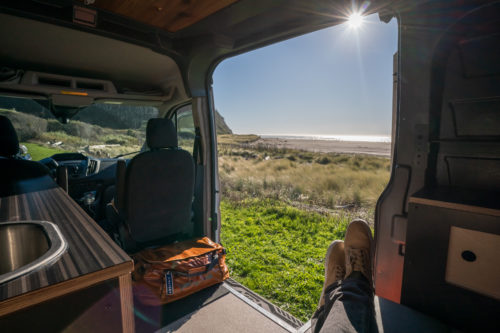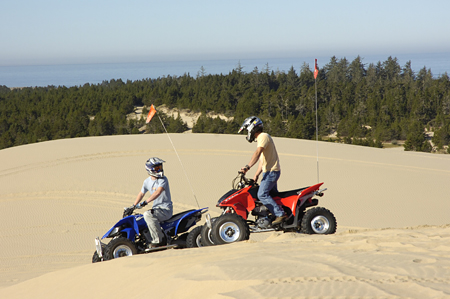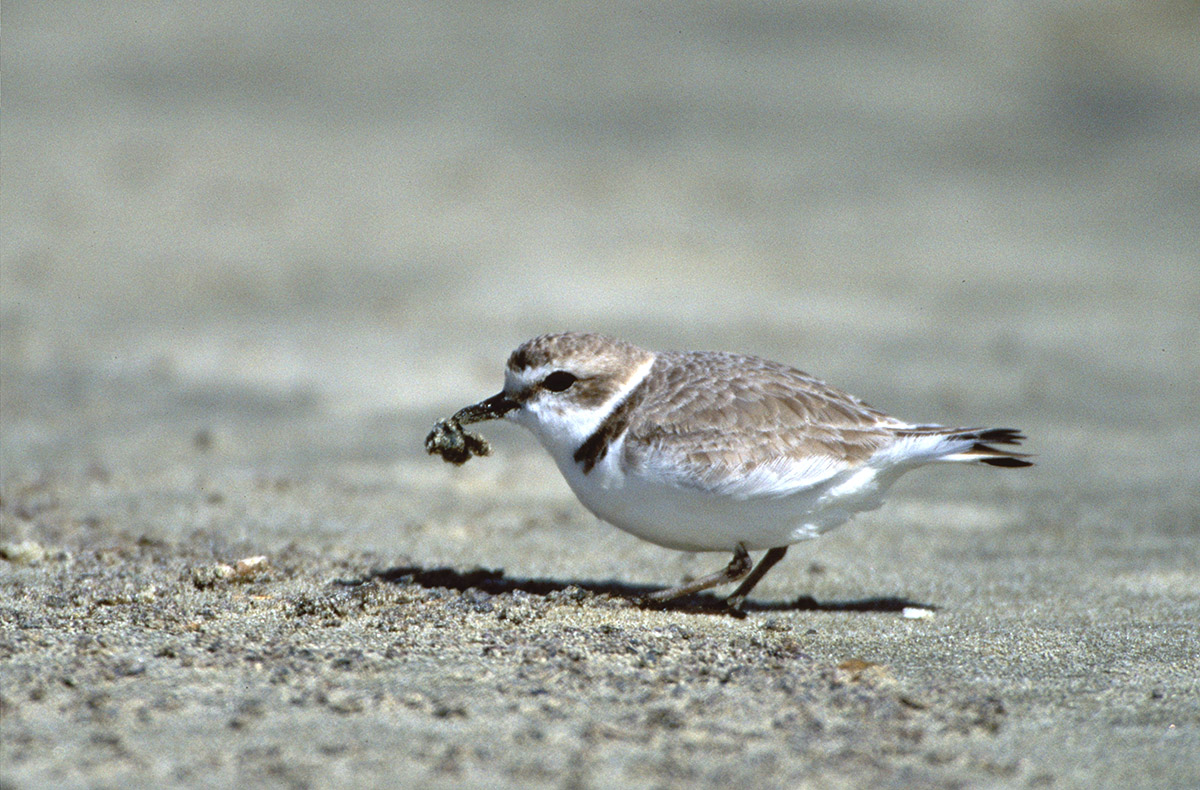One of the largest temperate coastal sand dunes in the world, the Oregon Dunes National Recreation Area was created in March, 1972, in order to protect the unique formations of shifting sand, coastal forest, and rugged beaches. At 31,500 acres, this is no small patch of sand! With everything from OHV access and mountain biking to challenging sandy trails and beautiful camping, you’ll see why this is a popular destination for Oregon coast visitors. We’ve put together a comprehensive guide to help you navigate this large recreation area so that you can maximize the fun on your visit. From where to hike, where to camp, and where to spread out your beach blankets, we’ve got you covered.
Camping
There are abundant options available for camping in the Oregon Dunes National Recreation Area. Depending on your comfort needs, accommodations range from the spare to the deluxe. Sutton Campground and Lagoon Campground tend toward the smaller side and offer decent privacy and tall trees. For OHV enthusiasts, however, Driftwood II Campground may make the most sense. It has direct access for off-roaders. The campground feels more like a parking lot, making it less than ideal for tent campers who aren’t also off-roading. Similarly named, but vastly different in feel, Tahkenitch Campground and Tahkenitch Landing Campground offer different amenities for campers. Tahkenitch Landing is all about lake access, where the Tahkenitch Campground is geared more toward hiking. Carter Lake Campground offers a middle ground, with both lake and beach access. For visitors seeking greater quiet, away from the OHV scene, Eel Lake Campground is ideally situated smack in the middle of one of the few non-motorized areas.

Van life on the south coast, Cort Muller
Trails
A wide range of trails crisscross the Oregon Dunes National Recreation Area. Depending on your ability and the amount of time you have to commit, there is something for just about everybody. Starting right from the campsite, the Sutton Campground Loop trails provide a mix of ecosystems ranging from forested dune to brackish lake and dune grass. For both hikers and mountain bikers, the Siltcoos Lake Trail is an attractive single track circling a lovely bit of water. This is also a pet-friendly trail! For quick access to dunes, the Oregon Dunes Loop trail is the perfect fit. Wind-carved hills, deep valleys, and long-distance views make this trip special. There are two options for trip length, and you can choose the distance that best fits your ability. The longer loop features 2 miles of deep sand at the end, something worth bearing in mind. The Hall and Shuttpelz Lake Trail provides a cozy and quiet retreat. Less traveled, this is a good spot to escape both the crowds and noise. For less beachy views, check out Eel Lake Trail; with old-growth forest to cool you off in the summer months, this is a calm and brief respite from the wind of the Pacific. The quintessential dune experience might best be found on the John Dellenback Trail at the far southern end of the recreation area. Here, in the middle of a section known as the Umpqua dunes, it is possible to walk out into the middle of this special recreation area and feel truly alone. Tracking the trail markers in the undulating sand can be challenging, particularly in inclement or foggy weather. A map and good wayfaring skills are highly recommended, despite the trail’s brief 2.5-mile length.

Beaches
Stretching for miles along the coast, beach access is easy to come by in the this recreation area. The Taylor and Carter Dunes provide a convenient way to get out to the ocean via short trails. The Oregon Dunes Loop hike also provides access. The Siltcoos Beach Day Access area offers parking and vault toilets for beach-goers with very little effort to get to the water compared to other options available. Finding beach access that doesn’t compete with OHV access typically means at least a brief hike. Consider venturing out on sections of the Hall and Shuttpelz Lake Trail or John Dellenback Trail in order to gain views of the Pacific Ocean.
OHV Access/Recreation
The biggest draw to the Oregon Dunes National Recreation Area might just come from OHV users. Recent years have seen drastic improvements to the recreation systems in place for off-roaders. According to the Forest Service, “starting in 2015, designated motorized travel routes were established for the Oregon Dunes National Recreation Area. These designated routes are marked by new signs on designated trails, their intersections, and beginning/ending points; additional trail markers along the designated trails; new information boards with maps of the adjacent riding area; and new interactive, GPS-enabled maps to help guide you on the new designations.” Information on these new routes can be found on the Forest Service webpages. About half of the Recreation Area is open to OHV riders, so there’s plenty of room for exploration and camping here! Riders have both open area and trail options available to them. Sand camping is also an option for OHV enthusiasts if campgrounds are full. Specific rules apply, so it’s best to check with the Forest Service.

Western snowy plover adult feeding. Photo courtesy of D.Pitkin, U.S. Fish + Wildlife Service.
Critical Snowy Plover Habitat
This area provides critical habitat for the western snowy plover, a species that the U.S. Fish and Wildlife Service listed as threatened in 1993. The breeding season for the western snowy plover is from March 15 to September 15, and during this time it is imperative to avoid potential nesting locations in dry sand beach areas. Dogs, kites, vehicles, and drones are all prohibited during this time, and walking is only allowed near the waterline. Please do your part to help this threatened species survive by complying with posted restrictions and completely avoiding closed areas. To learn more be sure to check out these snowy plover resources:
Top image by Dylan VanWeelden